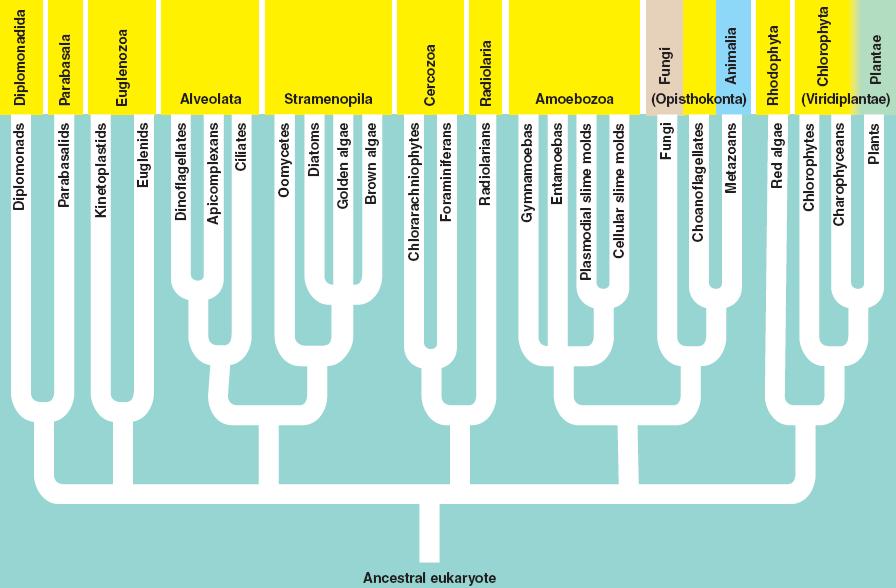Classification
Slime Mold
My classification of slime mold stops at the Kingdom Protista
because the term slime mold is a relatively broad term for any
number of organisms; there are upwards of 700 different species
of known slime molds. These slime molds fall into two major
different phyla; cellular slime molds and plasmodial slime
molds. So needless to say, it would be a little bit ridiculous
to sit and list all of the different phyla, classes, orders,
families, genera, and species.
But I can take you through an
example of a common species of slime mold, Physarum
polycephalum.
Domain: Eukarya
Slime molds are under the Domain Eukarya because they
have membrane-bound organelles, true nuclei, and a plasma
membrane.
Kingdom: Protista
Slime molds are classified under the Kingdom Protista because,
like other protists, they really don't fit in with other
kingdoms! They are motile like animals but some are unicellular
so they can not be classified as animals. Slime molds are an odd-ball
group, so like other odd-balls, they get thrown in with the
protists.
Phylum: Myxomycota
This particular slime mold is under
the phylum Mycetozoa because it is a spore bearing slime mold
and is truly multicellular, unlike plasmodial slime molds.
Class: Myxomycetes
This slime mold is considered a
Myxomycete because it is a true plasmodial slime mold.
Order: Physarales
Family: Physaraceae
Genus: Physarum
Species: Physarum polycephalum
The species name "poly" means many while "cephalum"
means head. So this slime molds name really means "many headed
slime."
Phylogenetic Tree
This tree shows the place of cellular and plasmodial slime molds
under the supergroup system of organizing the different groups
of organisms. The slime molds fall under the title of Amoebozoa.

This tree shows where slime molds fall in compared to animals,
bacteria, and archaea. It also shows the closer relatives which
slime molds are clearly closer related to animals based on their
characteristics than any kind of bacteria or archaea.

Return Home
Go to Habitat